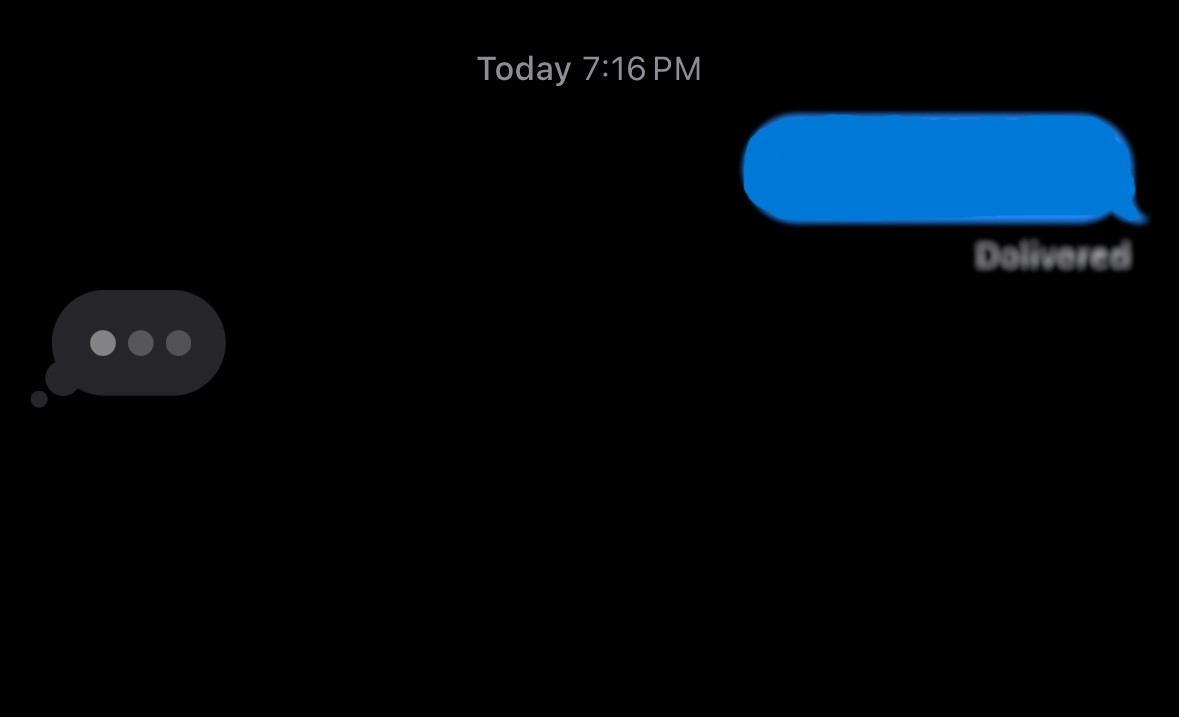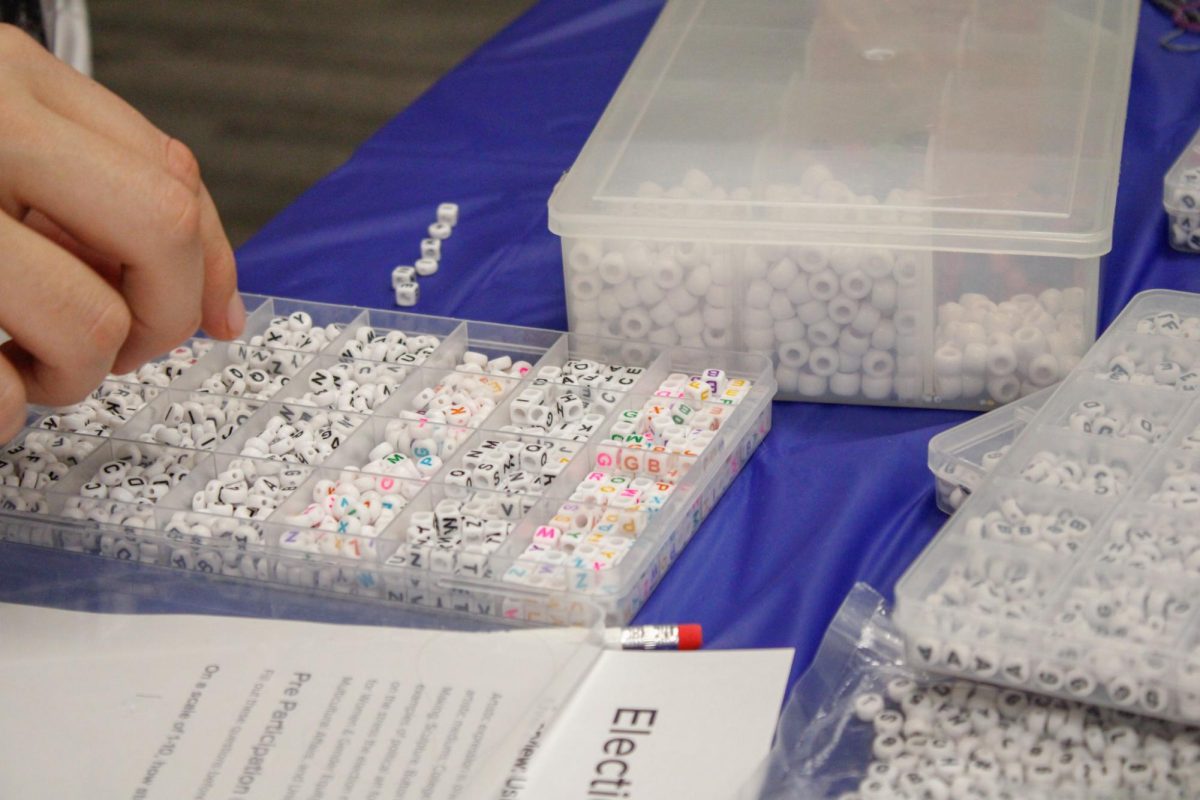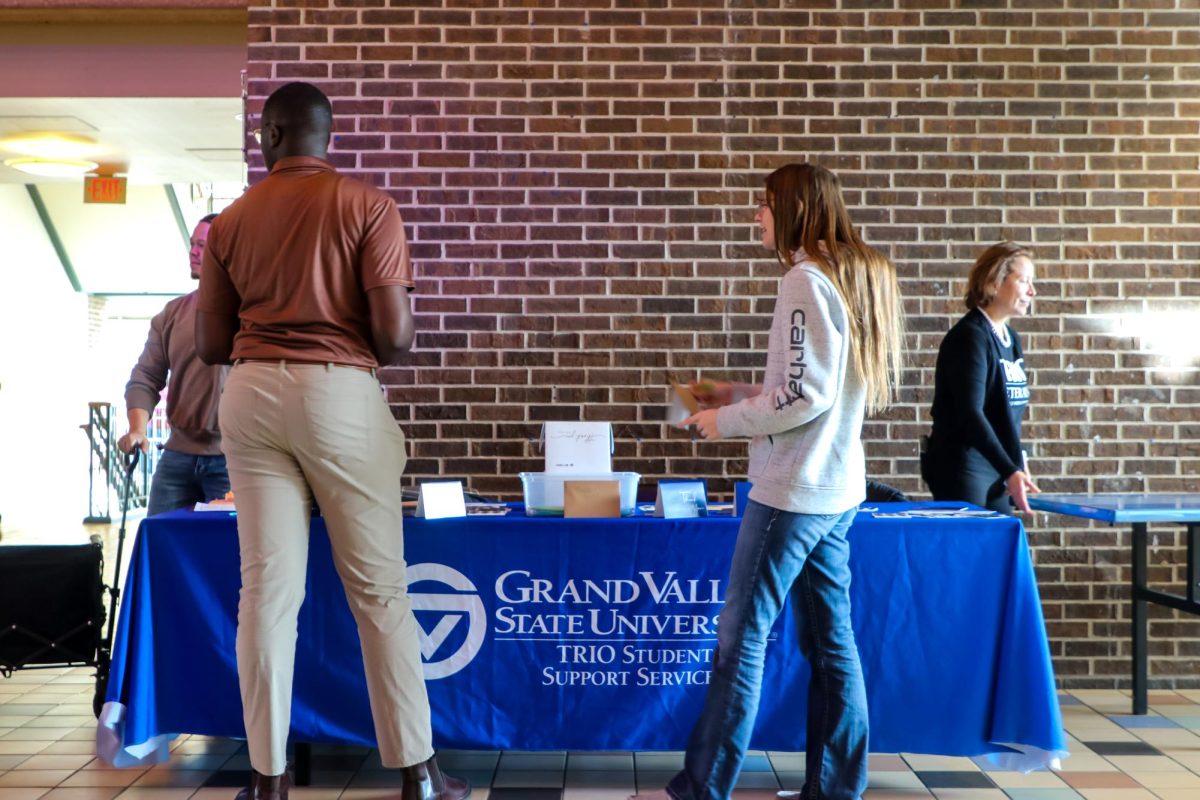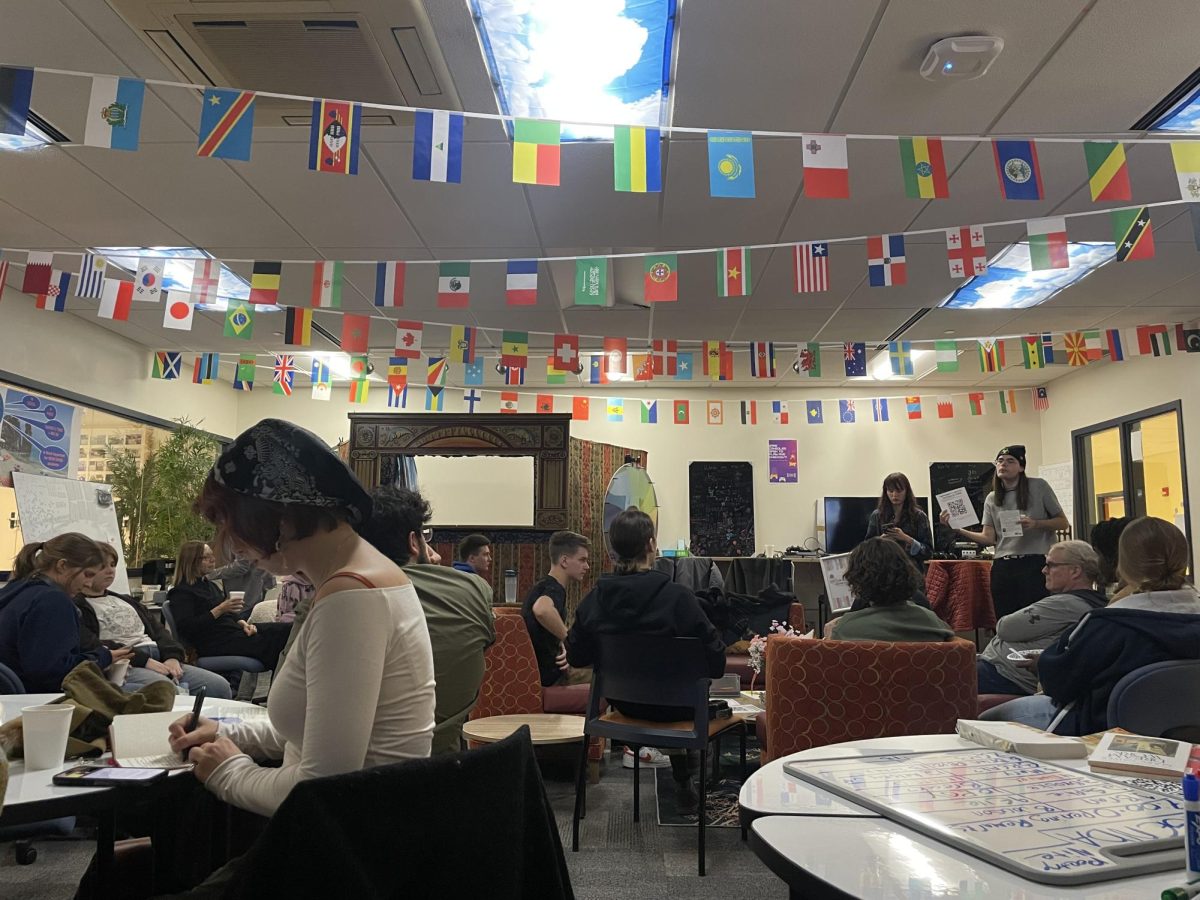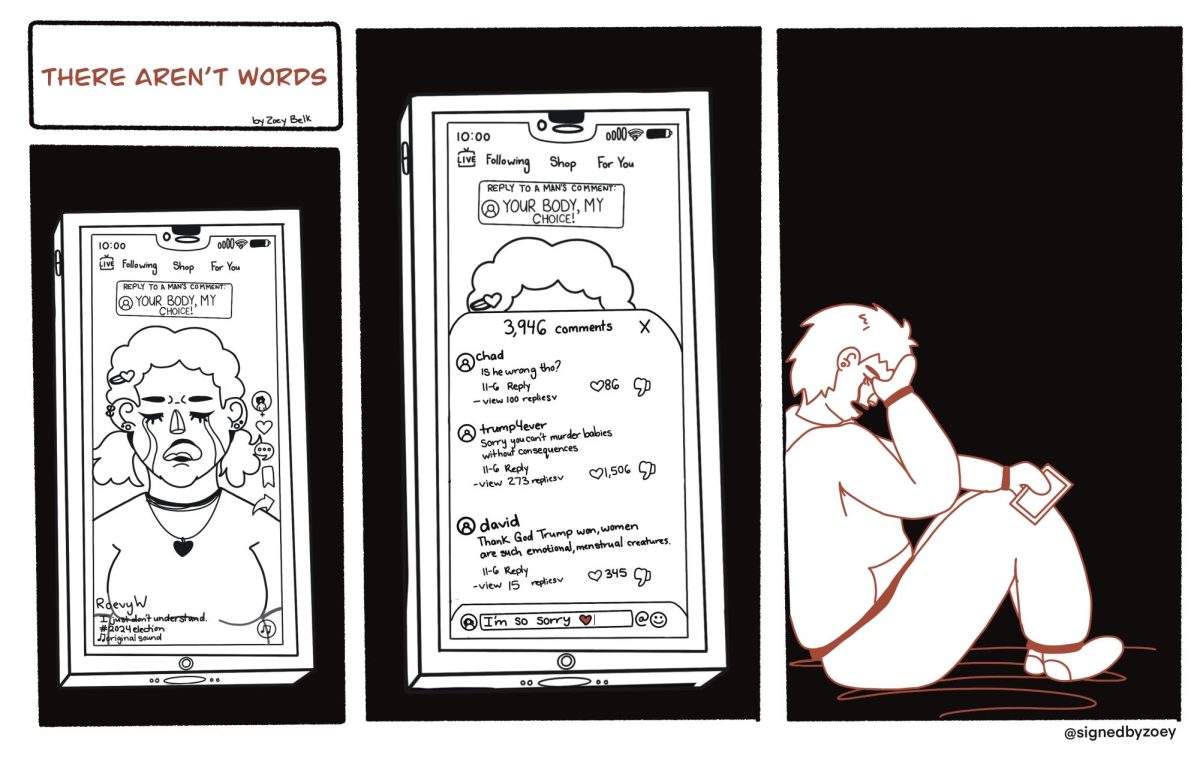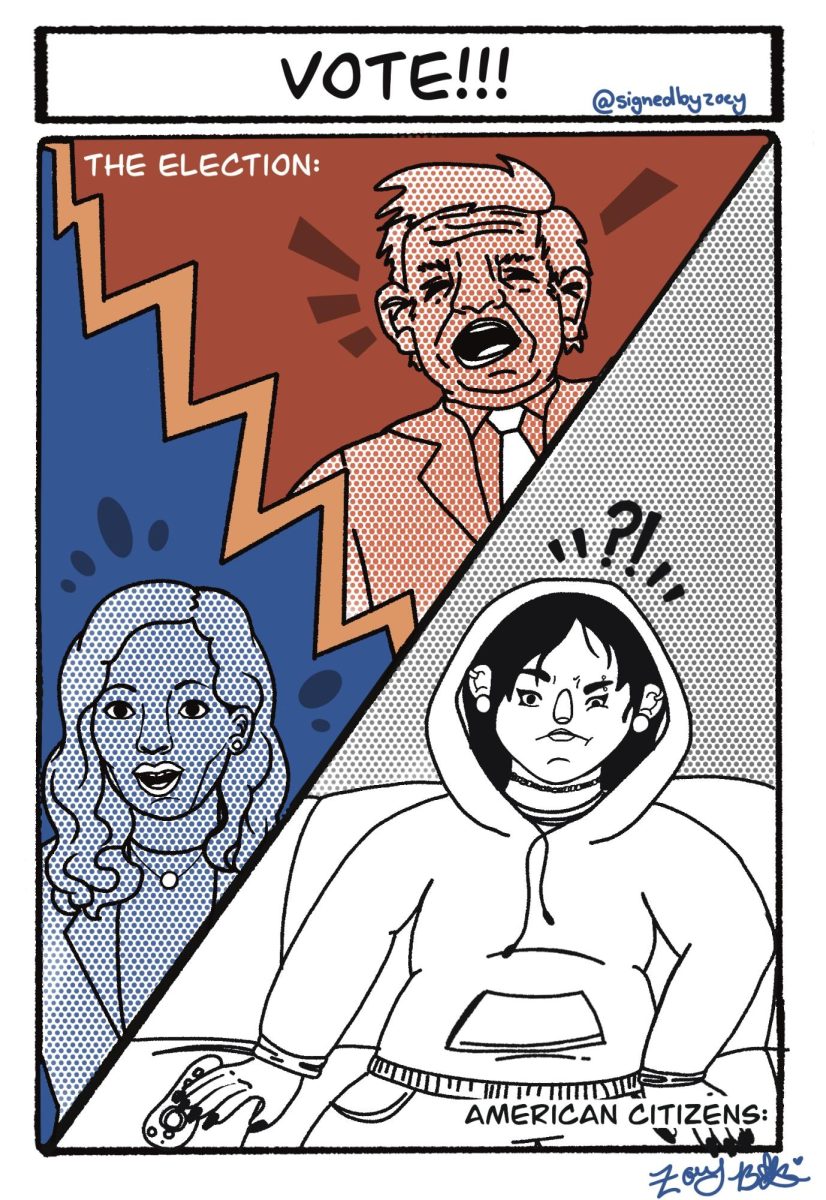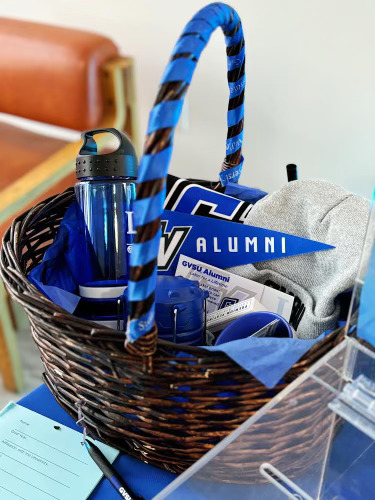GVSU students educate peers on waste disposal at campus dining locations

GVL / Courtesy – GVSU Green Team Sam Green in Kleiner educating students
Oct 23, 2017
As part of a campus-wide sustainability initiative, Grand Valley State University’s Student Environmental Coalition (SEC) is promoting sustainability on campus by teaming up with campus dining’s “green team” for their waste bin monitoring project to educate students on recycling and composting on campus.
SEC is a student-run organization that helps promote sustainability on campus through service projects like a campus cleanup and “adopt a highway,” as well as fun enrichment activities like watching environment-based movies once a month.
GVSU prides itself on being a sustainable school. The university works to support the causes SEC holds dear by offering compostable cups and plates in the campus dining areas as well as creating “sort stations” throughout campus where trash can be sorted between recycling, composting and landfill items.
However, it was recently brought to the attention of campus dining that many students were disposing of their trash in the wrong bins. The goal on campus is to have at least 70 percent of the waste properly disposed of, but data found by the green team shows that students are currently not meeting this standard.
This discrepancy prompted current green team intern Mara Spears to bring back the waste bin monitoring, a project on campus that ensures sustainable practices in campus dining areas. The project runs on the hard work of the green team as well as the volunteers brought in by SEC.
The green team project has been in existence since the sort bins were first placed on GVSU’s campus years ago, though the waste bin monitoring has not been done every year. To help coordinate environment-focused events and incentives, campus dining assigned the role of green team intern to Spears.
Along with this job, Spears’ responsibilities include coordinating green team volunteers, conducting bin motoring, helping run the adopt-a-highway initiative and much more. According to Spears, about 90 percent of the green team volunteers come directly from SEC.
“We stand by the bins, and we inform students on what campus dining bins to use and explain to students what can be recycled, composted and what has to be put in (the) landfill (bin),” said Katelyn Tomaszewski, SEC co-president and GVSU junior.
Tomaszewski and senior Kyle Hart work together as co-presidents of SEC and continue to help keep this initiative running along with many other programs going on in SEC.
“The purpose of the green team is to educate Grand Valley students on the availability of composting that we have, and campus dining and Grand Valley as a whole put forth great effort to make things more sustainable,” Hart said. “Every material campus dining puts forward … is either recyclable or compostable, but we see a disconnect in how well the students are aware of that and how well they put those items in the correct bins.”
Spears explained the general rules of properly disposing of waste in a few simple steps: Recyclable items need the “chasing arrow” symbol with a number from one to seven inside. These items have to be about 70 percent clean from food or water. Compostable items include all food and liquids as well as all campus dining eco-products like plates and containers.
When it comes to landfill items, Spears says, “when in doubt, throw it out” to avoid contaminating the compost or recycling bin. There are other items that can be found on GVSU’s campus where the rules are slightly different, such as wax paper plates, but these tips are a good rule of thumb to keep in mind.
GVSU freshman Caroline Adams was first intimidated by the numerous ways to dispose of trash when she arrived at campus, simply because her high school did not offer such extensive options. Now, with the help of the green team, Adams has a better understanding of the system, and she hopes it will help other students as well.
“I think having the students stand there and help other students learn what belongs in what trash bin is a good idea because it can be confusing to some students,” Adams said. “I’ve seen other students on campus throw recycling items into the (landfill bin). I think it will help students in the future and help our school become a better place.”
Spears, along with those on SEC, check the waste bins once a month to see how well students are sorting materials on their own as a kind of audit to see how the education of waste management is progressing at GVSU.
“During those audits we will take compost and trash bins from the waste bins, and then we sort through them and actually sort out how much of the compost trash bin had compost materials versus landfill materials, and then we weigh them before and after we sort them, so that difference in weight is kind of our analog for how well students are composting,” Hart said.
Though the green team has not collected hard data on the effectiveness of this project, the results seem to be positive thus far. According to Tomaszewski, even without the audits, the green team has seen a great improvement in students placing trash items in the correct bins. The project has not only helped improve how much students dispose of waste correctly, but the green team and SEC are becoming more well-known around campus through this initiative.
“I definitely have seen, personally, an increase in our presence on campus, so people are aware of the initiative,” Hart said. “Campus dining workers and managers have asked us, ‘Oh, I’ve noticed you’ve been doing this … What is it? How can I help?’ So (I) definitely (have noticed) an informal community response. We are gaining a little more public awareness on campus.”
According to Hart, the rate of student volunteer involvement has grown within the past year, and SEC hopes to keep the volunteer numbers growing.
“We’re gaining traction this year and having (members regularly volunteer), and hopefully we can continue to build it up as something that’s a little more prominent and with a little bit more presence on campus,” Hart said about the green team initiative. “We try to keep it fairly consistent by having everybody at all the different campus dining locations, so we try to encourage daily participation.
“We’re trying to aim for having someone at every different campus dining location representing the green team every day.”
Another benefit to working with the green team’s bin-monitoring team is the opportunity to earn service hours or dining dollars from campus dining.
“Our volunteers get paid in dining dollars, and campus dining takes care of that,” Spears said. “It’s a fun little perk for the green team. We welcome people who want to use the green team for volunteer hours, but we recognize that students have to work hard and their time is valuable, so we play them in dining dollars.”
The next upcoming project SEC is working on is “zero waste football games,” and it is another way to get involved in the green team’s cause.
“That would be helping to do waste sorting right at the football games,” said Yumiko Jakobcic, sustainability coordinator at GVSU and SEC staff adviser. “You get to watch the game and do it at the same time. The green team and the SEC will be at … those games, so you get an opportunity to work with them and get to know them, and it’s definitely a fun environment to do waste sorting in for sure.”
To get involved in the green team or any of the SEC’s volunteer projects, Jakobcic recommends reaching out to the Sustainability Office on campus, located at 260 Lake Michigan Hall. The office will help put students in touch with organizers of the events or projects and help them begin their work with the SEC. For anyone interested in joining SEC, the coalition meets every Thursday evening in the Kirkhof Center.












